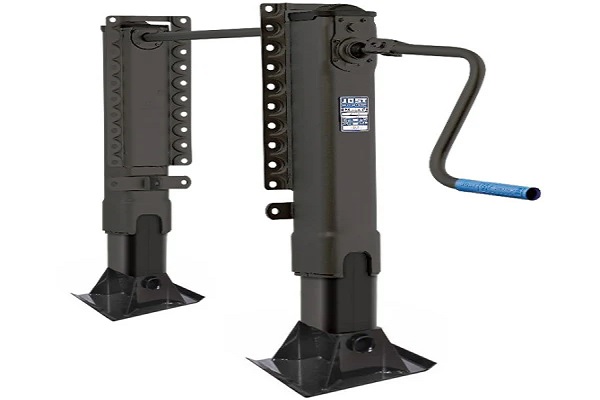When it comes to trailer safety, performance, and load stability, few components are as crucial — yet as often overlooked — as the landing legs. These seemingly simple devices serve a vital function: they support the trailer when it’s not connected to a truck, ensuring it stays upright, balanced, and safe during loading, unloading, or parking. Routine inspection of your trailer legs can help detect early signs of wear and prevent unexpected failures during loading or parking operations.
Investing in high-quality landing legs is more than just a matter of convenience — it’s essential for protecting your equipment, cargo, and crew. Here’s why landing legs deserve a top spot on your trailer maintenance and upgrade checklist.
What Are Landing Legs?
Landing legs, also known as trailer landing gear, are mechanical supports located at the front of a semi-trailer. When a truck disconnects from a trailer, the landing legs are lowered to the ground and take over the weight-bearing responsibility. Most are equipped with a manual or dual-speed crank handle to make raising and lowering more effortless, especially under heavy loads.
Without reliable landing legs, a trailer could tip, collapse, or shift, leading to costly damage or dangerous situations on-site.
The Role Of Quality Landing Legs In Trailer Safety
Heavy-duty trailers often carry loads of tens of thousands of kilograms. When disconnected, that immense weight rests solely on the landing legs. Using subpar or worn-out landing gear increases the risk of failure, a risk that can lead to significant financial losses or injuries.
High-quality landing legs are built to withstand not only the static weight of the trailer but also the dynamic stresses that come from uneven terrain, shifting cargo, and adverse weather conditions. Reinforced materials, robust welding, and corrosion-resistant coatings all contribute to a longer service life and greater peace of mind.
Improved Efficiency And Stability
Operational efficiency matters just as much as strength. Well-designed landing legs offer smooth, easy deployment, even under challenging conditions. Dual-speed gearboxes allow operators to switch between fast and high-torque modes, making it easier to raise or lower a loaded trailer without excessive strain.
Quality landing legs also provide greater trailer stability. Whether your vehicle is parked on gravel, pavement, or a slightly uneven surface, precision-engineered legs can help distribute weight evenly and prevent leaning or wobbling that could make loading unsafe.
When To Replace Or Upgrade?
Even the best landing gear won’t last forever. Gears, feet, and housings might deteriorate over time due to weather exposure and heavy use. Rust, stiff cranks, or difficulty in raising or lowering the legs are all warning signs.
If your current legs are struggling under load, showing signs of instability, or no longer operate smoothly, it’s time for a replacement. Upgrading to a newer, stronger model can also provide performance improvements, especially if your trailer is handling more frequent or heavier loads than it was originally equipped for.
Choosing The Right Landing Legs
Not all landing legs are created equal. When choosing a replacement or upgrade, consider the following factors:
- Load Capacity: Ensure the legs can support the full weight of your loaded trailer.
- Crank Type: Single-speed for light use, or dual-speed for easier handling under load.
- Foot Style: Sand shoes, drop legs, and swivel feet each suit different conditions.
- Build Material: Look for heavy-duty steel with anti-corrosion coatings for longevity.
Partnering with a reputable supplier also matters — they can help you match the right specifications to your trailer and load type, ensuring you get maximum performance and safety from your investment.
Final Thoughts
Landing legs might not be the flashiest part of your trailer, but they are unquestionably one of the most important. Investing in quality landing gear isn’t just about keeping your trailer upright — it’s about enhancing safety, simplifying operations, and avoiding costly downtime.
For fleet managers and independent operators alike, the message is clear: strong support starts from the ground up. Don’t overlook the landing legs — make them a priority in your trailer maintenance strategy.
